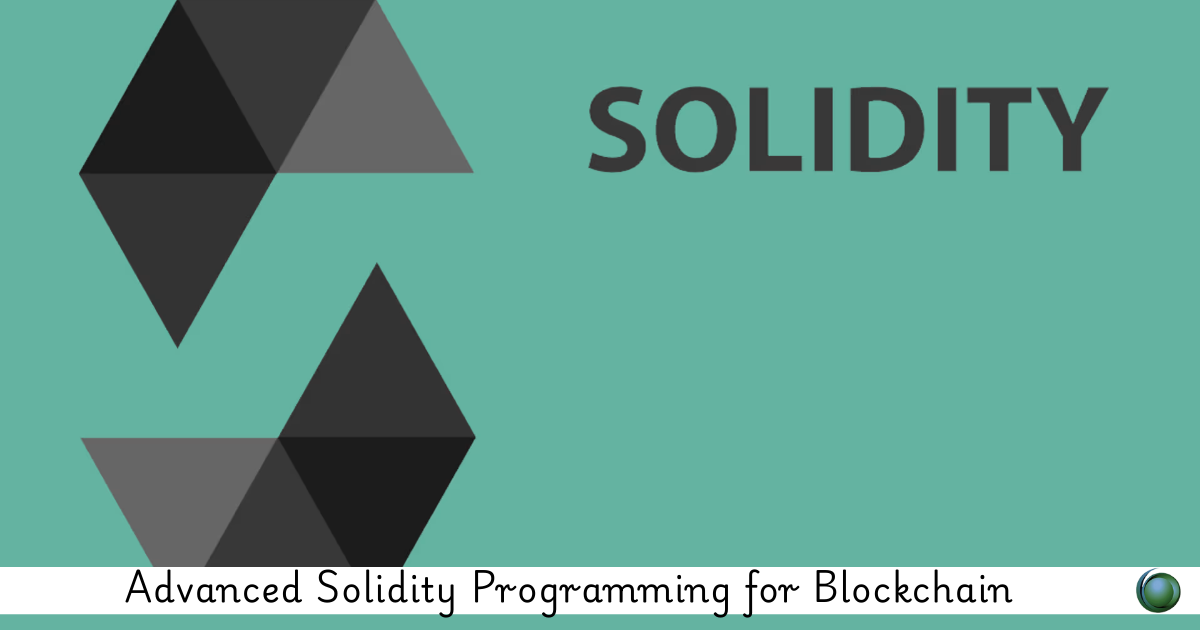Description
Introduction of Solidity Programming
Solidity has become the standard programming language for developing smart contracts on Ethereum and other blockchain platforms. This training is designed to equip participants with the skills necessary to build secure and scalable decentralized applications (dApps) using Solidity. The course covers everything from the basics of blockchain and smart contracts to advanced features like token standards and decentralized finance (DeFi). Participants will engage in hands-on coding exercises, learning how to write, test, and deploy its based smart contracts.
Prerequisites
- Basic programming experience: Knowledge of any object-oriented programming language such as JavaScript or Python.
- Familiarity with blockchain concepts: Basic understanding of blockchain technology and decentralized systems.
- Understanding of web development: Knowledge of front-end development (HTML, CSS, JavaScript) is helpful but not required.
- Introduction to Ethereum: Some awareness of Ethereum and its role in decentralized application development.
Table of Contents
1: Introduction to Blockchain and Ethereum
1.1 Blockchain Technology Overview
1.1.1 What is blockchain?
1.1.2 Key characteristics: immutability, decentralization, and transparency
1.1.3 Blockchain types: public vs. private blockchains
1.2 Understanding Ethereum
1.2.1 Ethereum’s blockchain architecture
1.2.2 Ether (ETH) and gas
1.2.3 Smart contracts on Ethereum
1.3 Introduction to Smart Contracts
1.3.1 Defining smart contracts and their use cases
1.3.2 The importance of immutability and trustless execution
1.4 Development Tools for Solidity
1.4.1 Overview of IDEs and tools (Remix, Truffle, Hardhat)
1.4.2 Setting up a development environment for Solidity
2: Solidity Fundamentals
2.1 Introduction to Solidity
2.1.1 Solidity language overview
2.1.2 Basics of contract creation: pragma, import statements, and contract structure
2.2 Data Types and Variables
2.2.1 Basic data types: integers, strings, booleans, addresses
2.2.2 Arrays and mappings
2.2.3 Structs and enums in Solidity
2.3 Functions and Control Structures
2.3.1 Defining functions in Solidity
2.3.2 Visibility (public, private, external, internal)
2.3.3 Control structures: if-else, loops, etc.
2.4 Storage and Memory
2.4.1 Understanding storage vs. memory in Solidity
2.4.2 How variables are stored in the Ethereum Virtual Machine (EVM)
3: Advanced Solidity Concepts
3.1 Function Modifiers and Fallback Functions
3.1.1 Creating and using function modifiers
3.1.2 Fallback and receive functions: handling Ether transactions
3.2 Events and Logging
3.2.1 Creating events in Solidity
3.2.2 Emitting and logging events
3.2.3 Using events to trigger off-chain actions
3.3 Working with Ether
3.3.1 Sending and receiving Ether in smart contracts
3.3.2 Gas, gas limits, and transaction fees
3.4 Inheritance and Interfaces
3.4.1 Implementing inheritance in Solidity
3.4.2 Abstract contracts and interfaces(Ref: Introduction to User Interface)
4: Smart Contract Security
4.1 Common Vulnerabilities in Smart Contracts
4.1.1 Reentrancy attacks
4.1.2 Integer overflows and underflows
4.1.3 Front-running and DoS attacks
4.2 Safe Smart Contract Development
4.2.1 Using SafeMath libraries
4.2.2 Best practices for secure contract development
4.2.3 Contract ownership and role management
4.3 Testing Smart Contracts
4.3.1 Writing unit tests for smart contracts
4.3.2 Using Truffle and Hardhat for testing
4.3.3 Simulating on-chain scenarios
4.4 Auditing Smart Contracts
4.4.1 Overview of automated tools for contract auditing
4.4.2 Manual auditing techniques
5: Token Standards and dApp Integration
5.1 ERC-20 Token Standard
5.1.1 Introduction to fungible tokens and the ERC-20 standard
5.1.2 Implementing and deploying an ERC-20 token contract
5.2 ERC-721 Token Standard
5.2.1 Understanding non-fungible tokens (NFTs)
5.2.2 Creating and deploying an ERC-721 token contract
5.3 Interacting with Smart Contracts
5.3.1 Using web3.js and ethers.js to connect dApps to smart contracts
5.3.2 Building a simple frontend for a Solidity-based dApp
5.4 Token Use Cases and Applications
5.4.1 Token economics and governance
5.4.2 DeFi applications: staking, lending, and yield farming
6: Advanced Features and Deploying Smart Contracts
6.1 Libraries in Solidity
6.1.1 Using external libraries to modularize code
6.1.2 Creating reusable contract components
6.2 Gas Optimization
6.2.1 Strategies for optimizing gas consumption
6.2.2 Writing efficient and scalable smart contracts
6.3 Deploying Smart Contracts
6.3.1 Deploying contracts to Ethereum mainnet and testnets
6.3.2 Working with deployment tools like Remix and Truffle
6.4 Interacting with Deployed Contracts
6.4.1 Using tools like Metamask to interact with deployed contracts
6.4.2 Calling smart contract functions from external interfaces
7: Real-World Projects and Case Studies
7.1 Case Studies of Successful Solidity-Based dApps
7.1.1 Analysis of popular dApps and their architecture
7.1.2 Lessons learned from real-world projects
7.2 Capstone Project: Building a Solidity Smart Contract
7.2.1 Design and implement a smart contract based on learned concepts
7.2.2 Deploy and test the contract in a test environment
7.4 Next Steps and Continued Learning
7.3.1 Ethereum 2.0 and the impact on Solidity
7.3.2 Exploring other blockchain platforms using Solidity (Binance Smart Chain, Polygon)
7.4 Next Steps and Continued Learning
7.4.1 Resources for advancing your Solidity skills
7.4.2 Networking opportunities in the blockchain developer community
-
-
- This course provides a comprehensive guide to Solidity, from basic language syntax to advanced contract development and deployment strategies.
-







Reviews
There are no reviews yet.